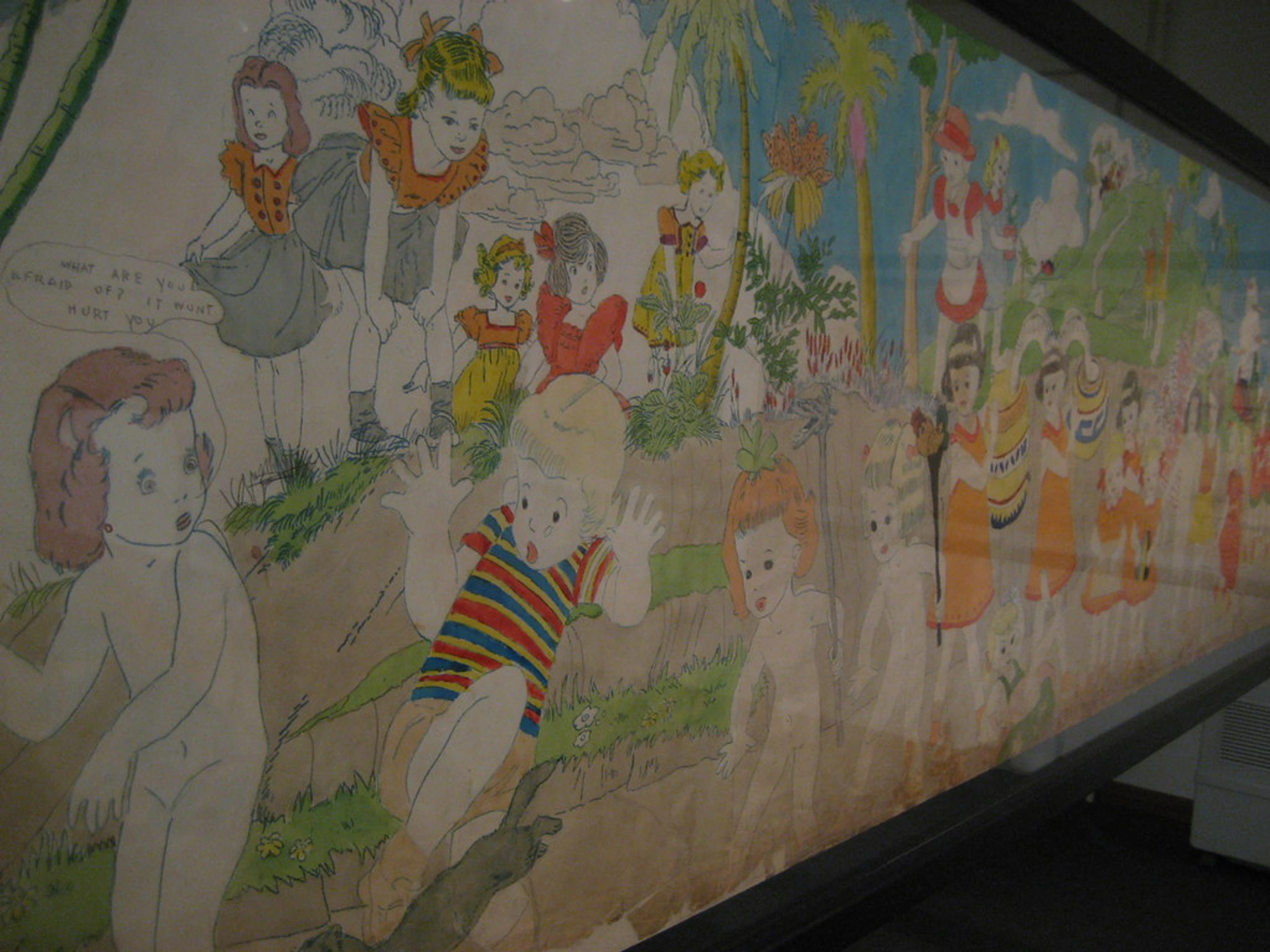
Unlocking the Dream World: A Personal Guide to Leonora Carrington
Dive into the fantastical mind of Leonora Carrington with this personal guide. Explore her unique brand of Surrealism, her life's journey, and why her art and stories continue to mesmerize and challenge us today.
The Unseen Worlds: A Guide to Leonora Carrington, the Surrealist Sorceress You Need to Know
Now, I'll be honest with you. Diving into Leonora Carrington's universe isn't a casual stroll; it's a plunge into a vibrant, often unsettling, and always mesmerizing deep end. This guide aims to be your compass, exploring her rebellious early life, her pivotal role in Surrealism (and her clever critiques of it), her transformative years in Mexico, and the enduring legacy of her art, writing, and fierce independence. We'll unpack her canvases, delve into her literary labyrinth, and peer into her profound engagement with the occult and the divine feminine. Seriously, this woman was a force of nature, a true original. So, buckle up; it’s going to be a wonderfully wild ride.
You know, I’ve always been drawn to those rare souls who just see the world differently. Not just in a quirky way, but fundamentally, as if their inner eye is tuned to a frequency most of us miss. And if you're anything like me, you'll find Leonora Carrington absolutely captivating. I mean, who wouldn't want to explore the mind of an artist who literally painted her dreams into existence? For me, as a curator, that's undeniably Leonora Carrington. She wasn't just an artist; she was a sorceress of the subconscious, a writer who spun worlds, and a fiercely independent woman who carved her own path through the male-dominated landscapes of Surrealism and beyond, challenging its very foundations with her unique blend of wit and mysticism. She reminds us that reality is far more fluid than we often imagine, a swirling tapestry of myth, magic, and rebellious intellect that felt less like art to be observed and more like an invitation to actively participate, to peer beyond the mundane and embrace the profound, often unsettling, beauty of the imagined. She didn't just paint; she conjured. She didn't just write; she wove spells, inviting us into a universe where the boundaries between waking and dreaming, human and animal, are wonderfully blurred. And in doing so, she became one of the most singular and important voices of the 20th century, a guiding star for anyone who's ever felt a little too 'other' for the ordinary world. This guide isn't just about art history; it's an invitation to explore a truly extraordinary mind, to step into a realm where imagination reigns supreme, and to understand how one woman redefined what art, and indeed, reality, could be.

--- Before Surrealism ever entered her lexicon, it was the wild, mystical tales whispered by her Irish nanny, the ancient Celtic folklore she devoured in hidden corners, and the vibrant, often unsettling, dreams of her childhood that first tilled the fertile soil of her imagination.
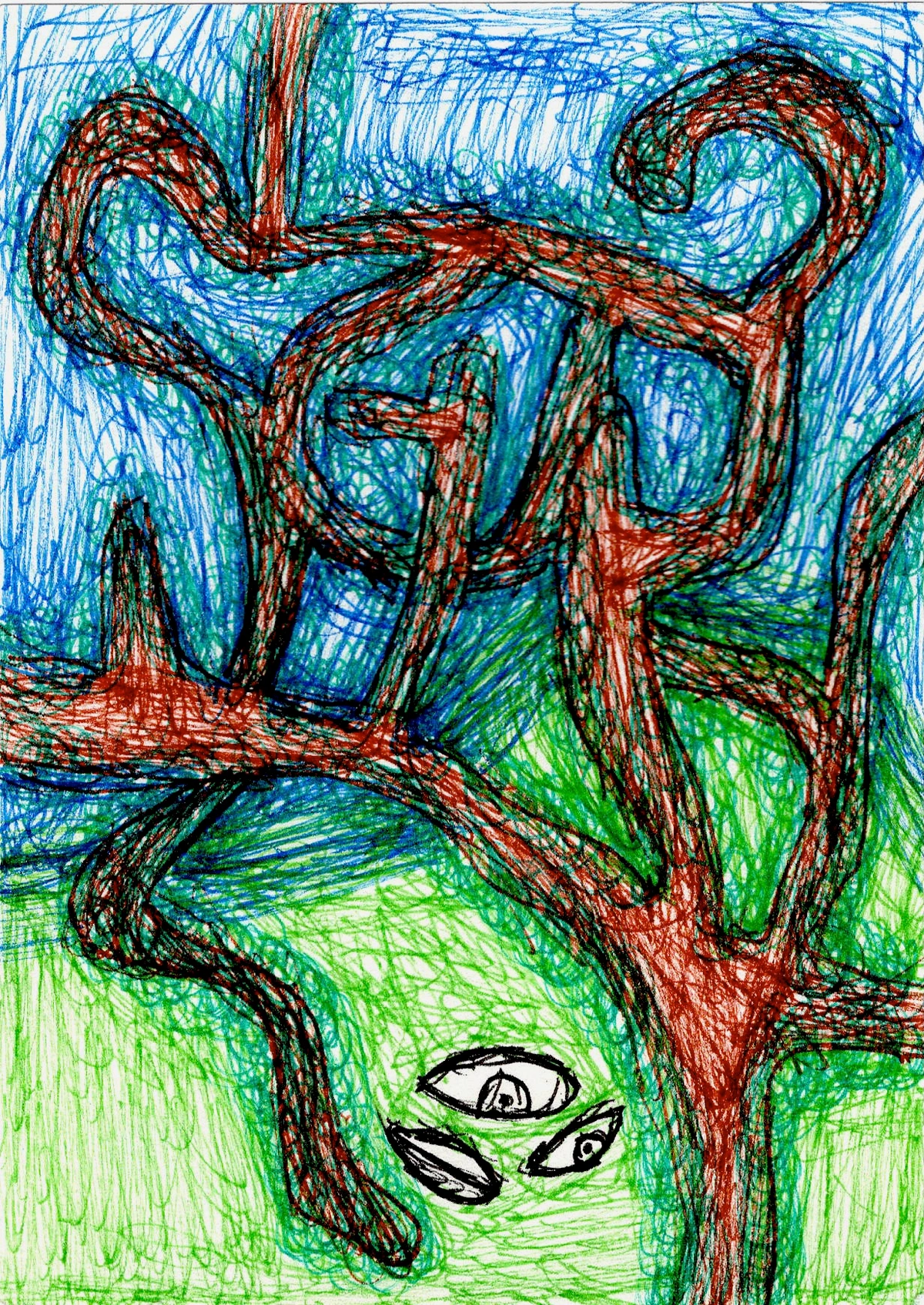
Carrington's Engagement with Performance and Ritual
Staging the Surreal: Theatre and Beyond
Leonora Carrington’s multidisciplinary talents extended beyond visual art and literature into the world of theatre. While living in Mexico, she actively engaged with the local theatre scene, writing and designing sets and costumes for several plays, bringing her unique surrealist vision to the stage. Her dramas, like "Penelope" (1957), often featured her characteristic blend of myth, animal symbolism, and a playful subversion of reality, creating immersive and unforgettable experiences for audiences. It wasn't just about putting on a show; it was about creating a living ritual, an immersive experience where her fantastic creatures and archetypal figures could literally come alive, embodying the narratives that were central to her artistic philosophy. For Carrington, the stage offered another potent arena for exploring transformation and the interplay between waking life and dream states. It allowed her fantastic creatures and archetypal figures to literally come alive, embodying the rituals and narratives that were central to her artistic philosophy. This embrace of live performance further cemented her role as a holistic storyteller, a true conjuror of worlds in every medium she touched. For Carrington, the stage offered another potent arena for exploring transformation and the interplay between waking life and dream states, much like her paintings and writings. It felt less like a play and more like a collective act of white magic, inviting the audience to participate in the unfolding of a new reality.
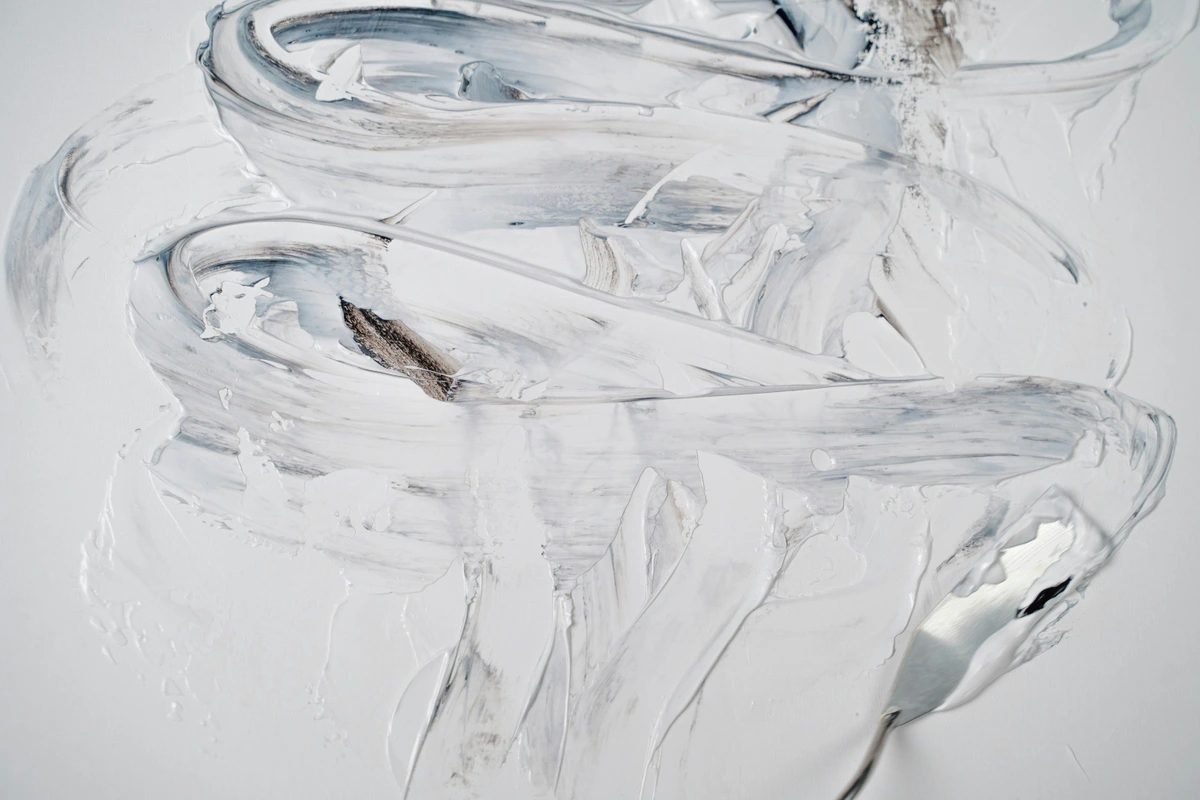

Her Humorous Edge: Satire and Playfulness
Amidst the deep symbolism and profound mystical explorations, one mustn't overlook Leonora Carrington's deliciously wry wit and mischievous sense of humor. Her satire wasn’t always loud; sometimes it was a quiet, subversive chuckle woven into a narrative or subtly hinted at in a painting. In "The Hearing Trumpet," for instance, she mercilessly skewers societal norms, institutions, and the foibles of human ambition with a truly anarchic glee. Her characters often find themselves in hilariously absurd situations, navigating a world that takes itself far too seriously, while they, with their animal companions and hidden magical powers, are the ones truly in on the cosmic joke. This playful gravity, this ability to find the profound in the ridiculous and the ridiculous in the profound, is a hallmark of her genius. She reminds us that true wisdom often comes with a smile, a raised eyebrow, and a healthy skepticism towards all forms of pomposity, inviting us to laugh at the absurdities of life and, in doing so, perhaps understand them a little better.
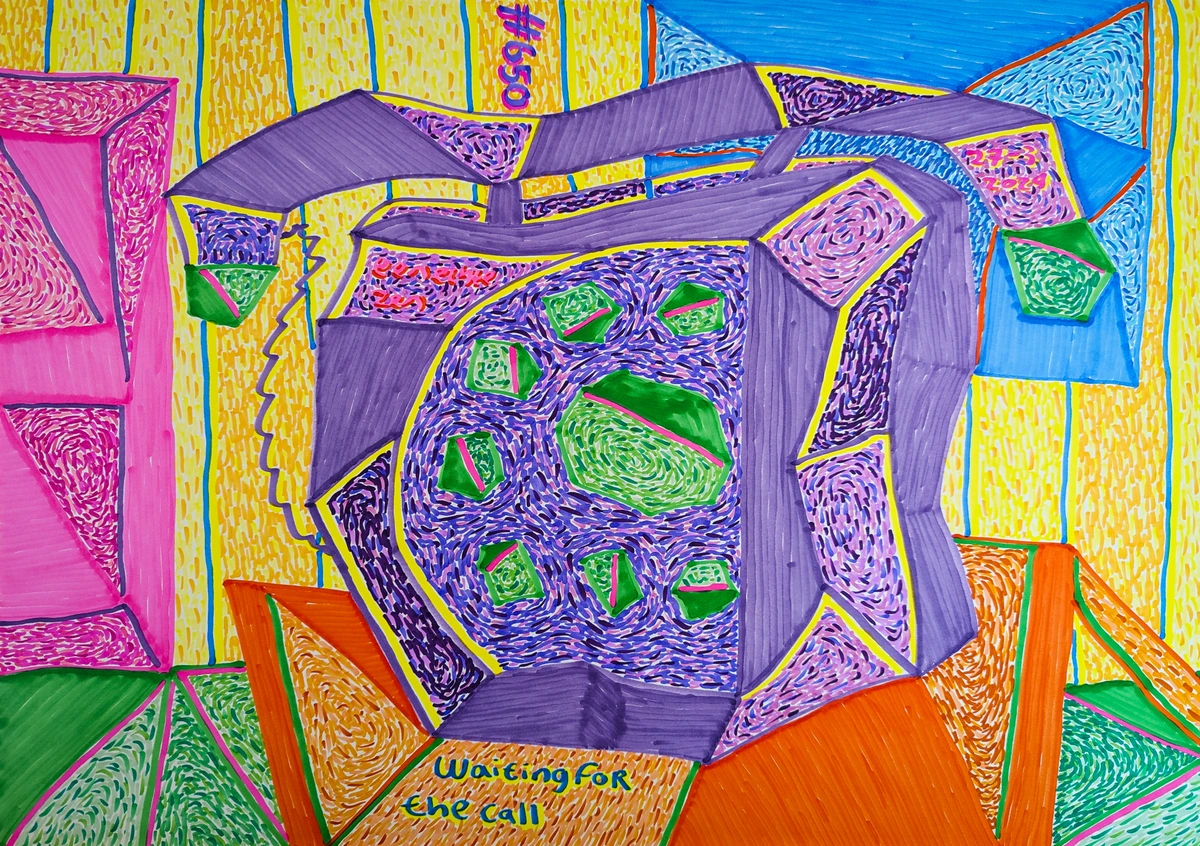
Leonora Carrington's Enduring Legacy
Beyond the Brush and Pen: Sculptures and Tapestries
While her paintings and writings are undoubtedly her most famous contributions, Leonora Carrington's creative spirit wasn't confined to two dimensions. She also ventured into sculpture and tapestry design, particularly in her later years in Mexico, demonstrating a holistic approach to her artistic expression. Her sculptures, often cast in bronze, carry the same mythic weight and whimsical character as her painted figures—think hybrid beings, totemic animals, and mysterious forms that seem to have emerged from ancient rituals. These three-dimensional works allowed her to explore texture and physical presence, transforming her otherworldly beings into tangible forms. Similarly, her tapestry designs, often vibrant and intricate, brought her rich iconography into the realm of functional art, weaving her unique narratives into everyday life. This expansion into different mediums wasn't a departure from her core themes but a further, tactile exploration of her magical universe, showing her tireless commitment to bringing the invisible into the visible world through every possible avenue.
Beyond the Canvas: A Writer of Fierce Imagination
Carrington's Visual Language: Technique and Symbolism
When you stand before a Carrington painting, it’s not just the subjects that mesmerize; it’s how she conjures them into being. Her preferred medium was often tempera, which allowed for a luminous, almost ethereal quality, a subtle glow that perfectly suited her otherworldly visions. She built up thin layers of paint, creating a remarkable depth and translucency that lends her figures and landscapes an ancient, fresco-like appearance. Her use of chiaroscuro, the dramatic interplay of light and shadow, often adds to the mystical atmosphere, pulling you into the deeper recesses of her dreamscapes. And her palette! While vibrant, it's often anchored by deep greens, blues, and earthy tones, colors that echo her profound connection to nature and the hidden spiritual world, making her compositions feel both ancient and intensely alive. She was a master of detail, populating her canvases with intricate patterns, symbolic objects, and hybrid creatures that demand close observation, each element a key to unlocking her complex narratives. It's a visual language that speaks directly to the subconscious, inviting us to decode its mysteries.

Her Wild Companions: Animals and the Natural World
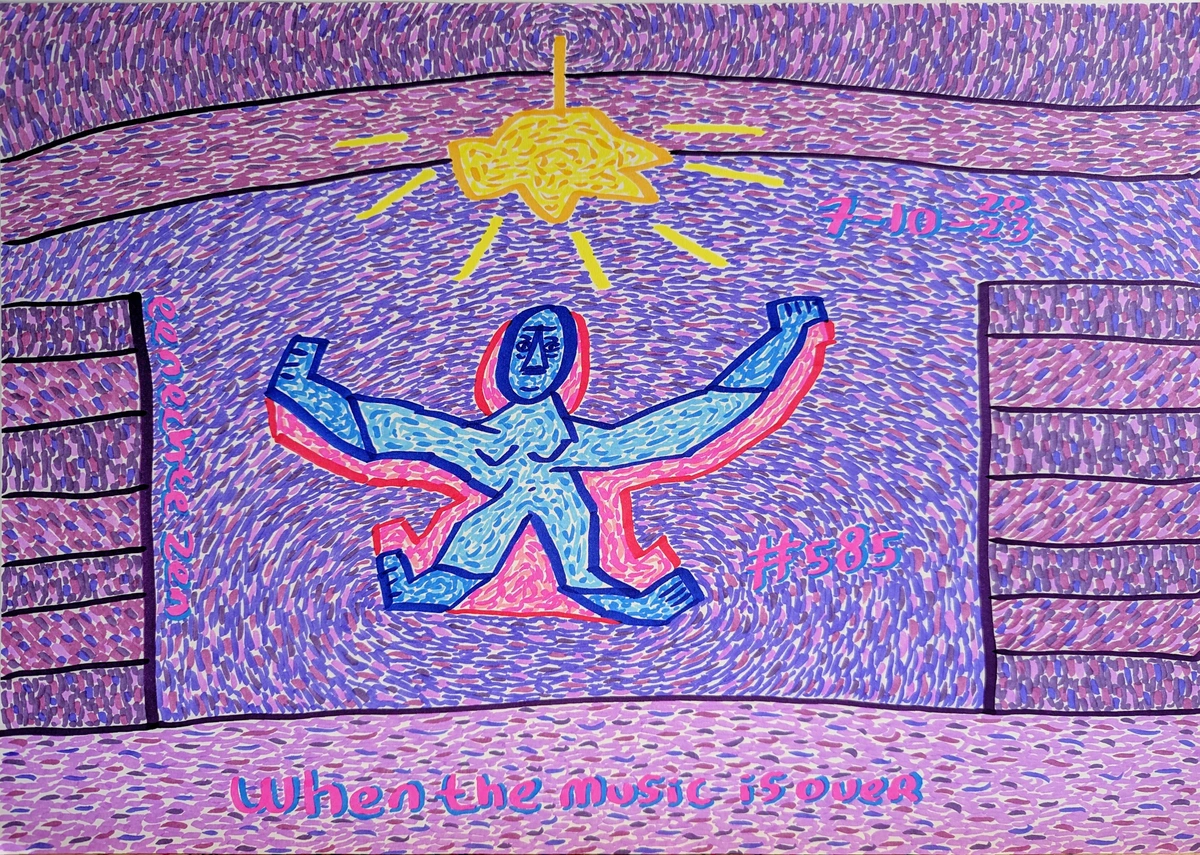
Carrington's Philosophical Labyrinth: Weaving Reality and Dream
Beyond the captivating visuals and intricate narratives, and if you truly lean in, Carrington’s work implicitly offers a profound philosophical framework, a way of seeing the world that challenges conventional Western thought, a quiet revolution in perception if you will. For her, reality was never a fixed, objective construct, but a fluid, multidimensional tapestry woven from dreams, myths, and the collective unconscious. She seemed to exist in a liminal space, where the veil between the waking world and the subconscious was remarkably thin, allowing her to tap into universal archetypes and ancient wisdom that most of us only glimpse in fleeting dreams. It's like she had direct access to the source code of reality, revealing its hidden patterns and boundless possibilities.
She consistently defied linear time and a singular, rational perspective, often portraying events as cyclical or simultaneous, echoing indigenous cosmologies. Her art and writing suggest that the narratives we tell ourselves about what is "real" are often limiting, and that true understanding comes from embracing paradox, intuition, and the interconnectedness of all living things. If you've ever felt that nagging sense that there’s more to life than meets the eye, a deeper current flowing beneath the surface, then you’re probably already attuned to Carrington’s frequency. She didn't just paint imaginary worlds; she painted the true nature of this world, stripped of its mundane disguises.

One piece that always makes me smile, and truly encapsulates her playful yet profound spirit, is "The Creation of Birds" (c. 1957). While not always as heavily discussed as her earlier works, it offers a glimpse into her mature Mexican period. In this vibrant painting, a central, winged figure (part-woman, part-bird) is seen using a drop of liquid from a vessel to seemingly conjure smaller birds into existence from a swirling, celestial-like background. The scene is imbued with a sense of gentle magic and ancient feminine power, a creation myth seen through Carrington’s unique lens. It speaks to themes of intuition, the life-giving force of nature, and the sheer joy of creation itself – a quiet, almost domestic magic that reminds us that profound acts of alchemy can happen in the most unexpected corners of existence. For me, it's a testament to her unwavering belief in the inherent magic of the world, and our own capacity to participate in its ongoing creation, even in the most subtle of ways. It’s a testament to her unwavering belief in the inherent magic of the world, and our own capacity to participate in its ongoing creation.

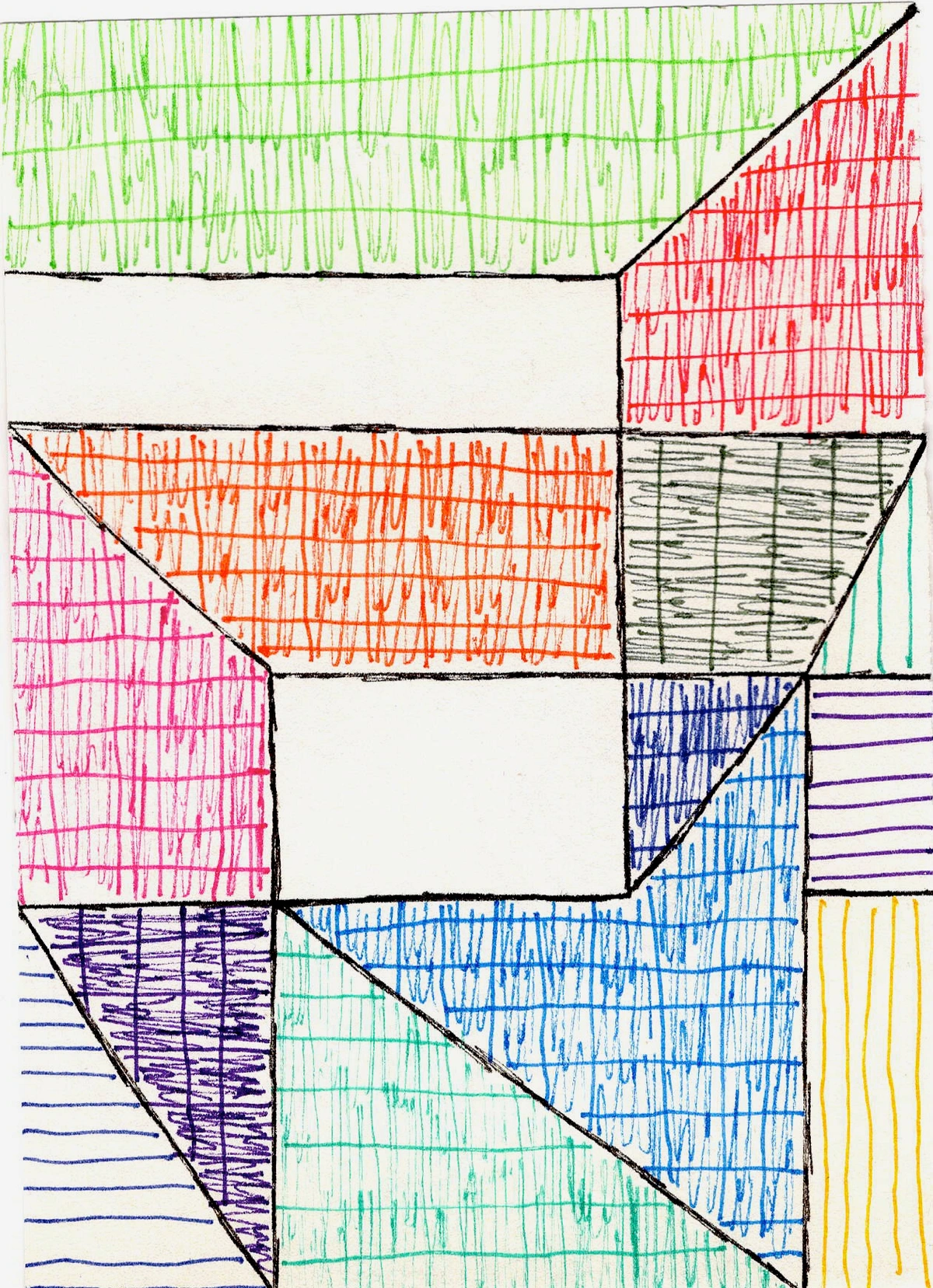
The Mexican Renaissance: A Spiritual Homecoming
It was after the harrowing experiences of war-torn Europe and the profound personal struggles of her institutionalization that Carrington, like a phoenix, found an unexpected sanctuary and a vibrant new spiritual home in Mexico City in 1942. This wasn't merely a change of scenery; it was a deeply transformative period, a blossoming into her full, uninhibited artistic power. The raw, syncretic spiritual energy of Mexico, so different from the intellectualized Surrealism of Paris, felt like a profound homecoming for her wild spirit. Mexican folklore, with its vibrant death cults, and deeply rooted indigenous spiritual traditions (including elements from the rich cosmologies of the Maya and Aztec, among others), along with the vibrant colors and symbolism of its culture, deeply enriched her already unique iconography. The syncretism of Catholic and indigenous beliefs in Mexico, for instance, offered a rich tapestry for her already alchemically inclined mind, providing endless new symbols and narratives to weave into her art. She became a vital figure in Mexico's artistic and intellectual scene, thriving in an environment that celebrated the mystical, the imaginative, and the interconnectedness of all things in a way Europe simply couldn't offer at that time. Here, she forged profound friendships with other European Surrealist exiles, most notably the brilliant Remedios Varo, who became a lifelong friend and intellectual sparring partner, a true kindred spirit in her exploration of the esoteric, and the photographer Kati Horna. This creative sisterhood provided a powerful, supportive network, allowing for shared exploration of themes often overlooked by their male counterparts. These relationships weren't just personal; they fueled a collective artistic and philosophical journey that profoundly shaped their individual practices, offering new lenses through which to interpret the universe. It was in this fertile Mexican soil that Carrington's art truly bloomed into its most potent, distinct form, a testament to how finding the right environment can make all the difference for a rare, exotic plant, allowing its most vibrant colors and profoundest narratives to emerge. She also interacted with prominent Mexican artists and intellectuals, though her closest bonds remained with her fellow Surrealist exiles, collectively creating a vibrant artistic diaspora.

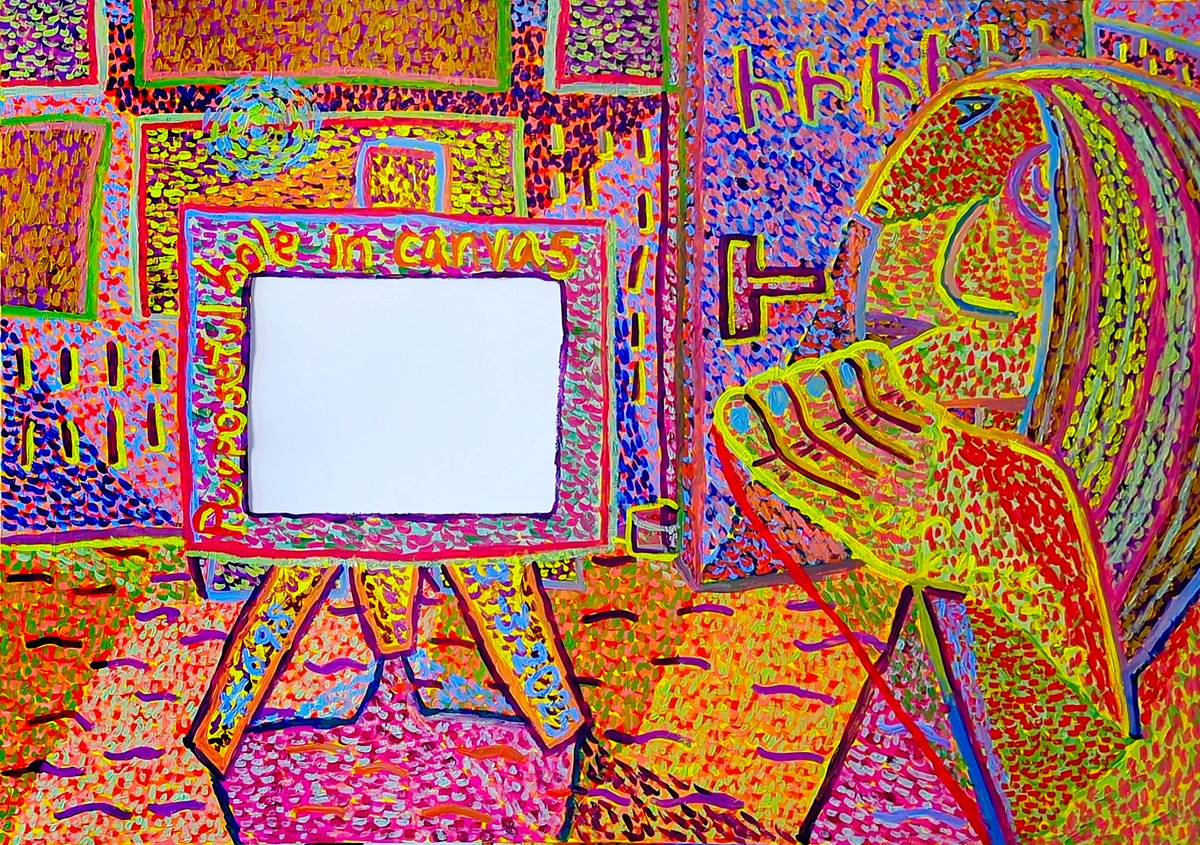

Who Was Leonora Carrington, Really?
Born in 1917 into an affluent British family, Leonora Carrington was, to put it mildly, a handful – a self-described "black sheep." And honestly, who can blame her? Her aristocratic upbringing in Lancashire, marked by a succession of nannies, strict convent schools that attempted to "tame" her unruly spirit, and stifling finishing schools in Florence, was met with fierce, unyielding resistance. You know, I always wonder what it's like to be born into a world so determined to put you in a box, especially when your soul is clearly meant to fly free. For Leonora, that feeling of being an outsider wasn't a flaw; it was her superpower. Can you imagine trying to force a wild stallion into a velvet harness? That was Leonora. Instead of dutifully copying scripture, she’d fill her prayer books with fantastical creatures and grotesque figures, leading to multiple expulsions, each one a small victory for her untamable spirit. Can you imagine the sheer audacity, the quiet rebellion of it all? While other girls were practicing their cursive, Leonora was sketching dragons in the margins, creating her own pantheon of delightful monsters. Imagine a young girl, instead of reciting hymns, quietly filling her prayer books with sketches of fantastical demons and grotesque creatures, and getting expelled for it, not just once, but multiple times. That was Leonora, her spirit too wild for convention, charting a course far removed from the manicured lawns and polite society she was born into. This early defiance wasn't just childish mischief; it was the nascent roar of a life that would be lived entirely on her own terms. It was the universe telling her, and us, that she was destined for something far grander than polite society could offer, laying the fertile ground for the mythical worlds she would later conjure. She understood, even then, that the most interesting stories unfold when you dare to write your own rules, and that the greatest art often comes from those who just can't, or won't, conform, especially when their inner world is so much richer than the prescribed one. She often found solace and inspiration in the family library, poring over books on Irish mythology, witchcraft, and the occult, which would profoundly shape her artistic universe. This wasn't just casual reading; it was a defiant act of self-education, a quiet rebellion against the superficiality she perceived around her, a prelude to the fantastical worlds she would later manifest on canvas and page. It's almost as if she was secretly gathering her magical ingredients, preparing for a lifetime of conjuring. It was a defiant act of self-education, a quiet rebellion against the superficiality she perceived around her, a prelude to the fantastical worlds she would later manifest on canvas and page. She preferred to build her own fantastical worlds, thank you very much. Perhaps those old Celtic tales and Irish folklore she absorbed as a child, hidden away in books, were already shaping the fertile ground of her imagination, setting the stage for the otherworldly narratives that would later define her art. It’s a powerful testament to the idea that sometimes, the greatest art comes from those who just can't, or won't, conform, especially when their inner world is so much richer than the prescribed one.
It was in London, while studying art at Amédée Ozenfant's academy, that she encountered Surrealism. This wasn't just an art movement for her; it was a profound validation of her inner world, a philosophy that championed the subconscious, the irrational, and the dream world as paramount. For a young woman chafing against societal constraints, finding an artistic movement practically screaming, "Embrace your wildest fantasies! Let your subconscious run riot!" must have felt like coming home – a sense of profound relief, a feeling that she wasn't alone in her fantastical internal landscape. She immediately recognized it as the language her soul had been speaking all along. She plunged headfirst into it, abandoning her conventional life and the expectations of her family. Her elopement with the older Surrealist painter Max Ernst wasn’t just a scandalous romance; it was a definitive break, a symbolic shedding of her old skin, and a leap into a world where her wild imagination found its most potent expression. She swiftly became an integral, albeit often overlooked due to the era's patriarchal blinders, figure in the Parisian Surrealist circle. Her initial exposure to the works and ideas of André Breton and others ignited a passion that would redefine her trajectory, pulling her irreversibly into a world of artistic freedom and intellectual fervor. To learn more about the broader movement she joined, explore our Ultimate Guide to Surrealism. It was a philosophy that championed the subconscious, the irrational, and the dream world as paramount, which, let's be honest, sounds like it was practically tailor-made for her.
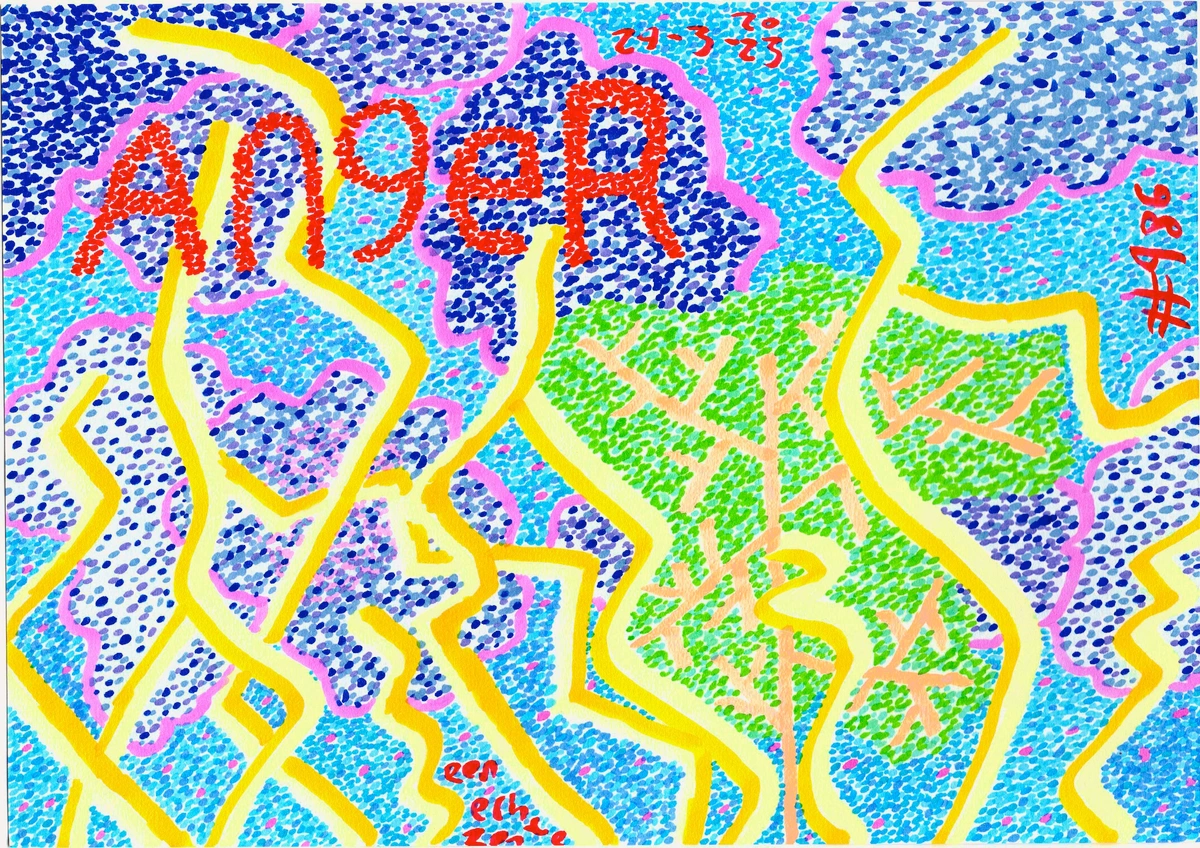
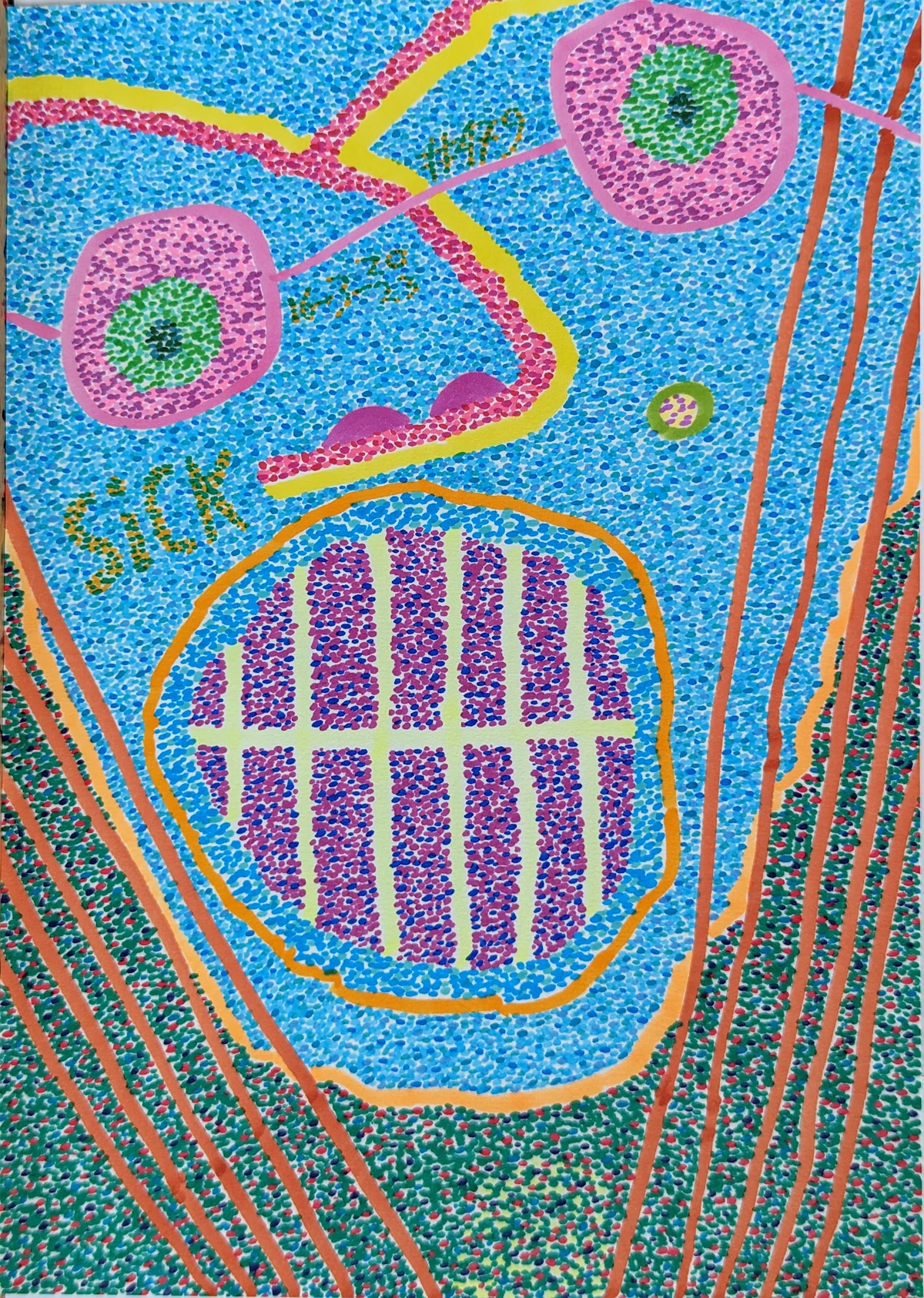
Leonora in Paris: Love, Art, and the Surrealist Inner Circle
When Carrington met Max Ernst in 1937, their connection was immediate and explosive, the kind you read about in novels but rarely experience. It was a whirlwind romance, the kind that sparks creative infernos and upends expectations – a coming together of two fiercely creative minds. Ernst, already a prominent Surrealist, became both her lover and a significant influence, a catalyst in some ways, though she quickly forged her own distinct artistic identity that was never merely a reflection of his. She wasn't an echo; she was a unique voice resonating within the Surrealist chorus, one that would soon challenge and enrich the very movement itself. Trust me, you couldn’t keep her in anyone's shadow. She wasn't an echo; she was a unique voice resonating within the Surrealist chorus, one that would soon challenge and enrich the very movement itself. They lived together in a secluded house in Saint-Martin-d'Ardèche, transforming it into a vibrant haven for their artistic experimentation. Imagine them, two mischievous spirits, decorating its walls with mythical creatures and fantastical murals – a true blurring of the line between art and life. This period, from 1937 to 1939, was marked by intense creativity, passionate intellectual exchange, and a deepening of her commitment to the Surrealist ethos, even as she began to critically observe its internal politics and occasionally, I imagine, roll her eyes at the male-dominated pronouncements.
She quickly integrated into the heart of the Parisian Surrealist movement, rubbing shoulders with giants like André Breton, Salvador Dalí, and Marcel Duchamp. (Just don't tell Dalí I said that; he had a bit of a flair for the dramatic, even by Surrealist standards!) But here's the thing: she wasn't content to be merely a muse or an exotic accessory, as many of the male Surrealists often cast women. Instead, Carrington asserted herself unequivocally as a creator, a visionary, and an equal, often using her sharp wit and even sharper artistic vision to subtly, and sometimes not so subtly, critique the very men who initially welcomed her. Imagine the dinner parties, the debates, the sheer intellectual energy! Yet, despite being at the epicenter, she always maintained a critical distance, a perceptive wariness of the movement's patriarchal tendencies. She wasn't content to be merely a muse or an exotic accessory, as many of the male Surrealists often cast women. Instead, Carrington asserted herself unequivocally as a creator, a visionary, and an equal, often using her sharp wit and even sharper artistic vision to subtly, and sometimes not so subtly, critique the very men who initially welcomed her. She found their sometimes overtly Freudian interpretations of dreams and their occasional objectification of women to be limiting, preferring to delve into a richer, more ancient tapestry of myth and personal symbolism. Her contributions, both artistic and intellectual, were vital, enriching the movement with a uniquely feminine, often deeply subversive, perspective that challenged its very foundations and pushed its boundaries beyond what many male artists dared to imagine. She notably resisted being cast merely as a 'muse' or 'femme-enfant,' a common trope among her male counterparts, asserting her intellectual and creative autonomy through her work and sharp wit. It's like she arrived at their party, took a look around, and decided she'd rather conjure her own, thank you very much, with far more interesting guests from the spirit world. She wasn't just in the room; she was helping to redefine its architecture, injecting a profound and ancient feminine sensibility into a predominantly male-driven intellectual landscape, anticipating later feminist critiques of Surrealism.

The war, however, brutally interrupted this idyllic, if unconventional, life. The escalating conflict plunged Europe into chaos, and Ernst, as a German national, was arrested by the Gestapo. Carrington, experiencing immense distress and a profound sense of loss that ripped through her very being, suffered a severe mental breakdown. This led to her involuntary institutionalization in a Santander asylum, a harrowing period marked by brutal treatments and a desperate fight for her sanity. It was a true descent into her own 'down below,' a period of intense trauma that would profoundly shape her future art and writing. Imagine trying to make sense of the world when your own mind feels like a fractured mirror; that was her reality. This intensely traumatic experience, a true descent into her own 'down below,' would profoundly shape her future art and writing. Her searingly honest memoir "Down Below" would later transform this personal agony into an enduring artistic statement, a powerful alchemy of suffering and creation, where the fragmented self and the search for identity became central, recurring themes. And let me tell you, reading it is like stepping directly into her mind during that harrowing time – unsettling, yes, but utterly profound.
The Surrealist Dreamscape: Her Unique Vision
The Surrealist Dreamscape: Her Unique Vision
Dreams, Visions, and the Collective Unconscious: Her Distinct Approach
Now, when we talk about Surrealism, our minds often jump to Salvador Dalí's melting clocks or René Magritte's bowler-hatted men. And while those are iconic, Carrington's approach was a whole different beast, a glorious, mythical creature of its own.
While many of her male Surrealist counterparts were busy dissecting Freudian dream analysis or, let’s be honest, often objectifying women in their work, Carrington was delving into something far more ancient, esoteric, and profoundly personal. She actively resisted the Freudian interpretations popular among her peers, finding them, I think, a bit too… clinical, too constrained by a singular worldview. For her, the subconscious wasn't merely a reservoir of repressed desires, but a direct conduit to the collective unconscious, a vast ocean of archetypes and shared human experience. It was like she bypassed the surface psychology entirely and went straight for the deep, mythical roots of human experience. For her, the subconscious wasn't merely a reservoir of repressed desires, but a direct conduit to the collective unconscious, a vast ocean of archetypes and shared human experience. Instead, she preferred to forge her own intellectual and spiritual path, one that recognized the subconscious not just as a repository of repressed desires, but as a living, breathing connection to universal mysteries. It was like she bypassed the surface psychology entirely and went straight for the deep, mythical roots of human experience, drawing inspiration from sources many of her male peers dismissed, pushing the boundaries of what Surrealism could explore. She understood that the true magic of the movement wasn't in dissecting dreams, but in living them. She immersed herself in alchemy, transforming base elements of trauma and intuition into gold on canvas, often drawing inspiration from texts like "The Chymical Wedding of Christian Rosenkreuz" and the symbolism of the Philosopher's Stone. She drew from Celtic mythology, populating her worlds with ancient deities and fae folk, and from Jungian archetypes, seeing universal patterns in her personal visions. The Kabbalah offered intricate symbolic frameworks, and the intricate, often overlooked, world of animals and hybrid creatures became her constant companions. Her canvases are teeming with shapeshifting beings – part human, part animal – powerful goddesses, and mysterious magical rituals, often set in otherworldly landscapes that defy conventional logic and invite you into a universe just beyond your waking grasp, a reality as vivid and coherent as any dream, perhaps even more so. She drew from Celtic mythology, populating her worlds with ancient deities and fae folk, and from Jungian archetypes, seeing universal patterns in her personal visions. The Kabbalah offered intricate symbolic frameworks, and the intricate, often overlooked, world of animals and hybrid creatures became her constant companions. Her canvases are teeming with shapeshifting beings – part human, part animal – powerful goddesses, and mysterious magical rituals, often set in otherworldly landscapes that defy conventional logic and invite you into a universe just beyond your waking grasp, a reality as vivid and coherent as any dream, perhaps even more so. This wasn't just an aesthetic choice; it was a deeply intellectual exploration of the collective unconscious, a quest to uncover a hidden order in the universe that echoed through all cultures and times, a profound engagement with the hidden architecture of the cosmos itself.
Her fascination with the occult wasn't merely aesthetic; it was a deeply intellectual and spiritual quest. She believed in a hidden order, a mystical reality that permeated the visible world, and her art became a conduit for these unseen forces. She didn't just depict dreams; she painted the very fabric of myth, weaving intricate narratives that felt both deeply personal and universally resonant, tapping into a collective unconscious and unveiling an otherworldly reality that felt more real than the one we inhabit. Beyond European traditions, her Mexican years saw her increasingly integrate elements from indigenous cosmologies and even ancient Egyptian myths, enriching her already vast symbolic lexicon. This often involved her unique understanding of esoteric systems like the Tarot, Gnosticism, and Hermeticism, which provided frameworks for her intricate symbolic language.

--- She saw these systems not as rigid dogmas, but as flexible tools for mapping the interior landscape and understanding universal patterns. What always strikes me about her work, what truly pulls you in, is its exquisite sense of playful gravity. There's humor, yes, a mischievous twinkle in the eye of the canvas, but also a profound depth, a questioning of reality that feels remarkably fresh, even today. If you’ve ever explored the enduring legacy of Surrealism, you'll notice Carrington carved out a distinct niche, a vibrant, often unsettling, but always captivating universe of her own – a truly unique voice in a chorus of dreamers who dare to ask, "Are you really seeing what's there, or just what you've been told to see?"
Her Wild Companions: Animals and the Natural World
If you spend any time with Carrington's art, you'll quickly notice a recurring cast of characters: animals. Not just any animals, mind you, but often wild, untamed, or hybrid creatures – hyenas, horses, birds, and felines – that aren't merely decorative but deeply symbolic. For Carrington, animals were often seen as keepers of ancient wisdom, spiritual guides, or manifestations of the subconscious, acting as vital links between the human realm and the mystical. Birds, for example, frequently serve as messengers between worlds, while felines embody an enigmatic, independent spirit and often symbolize the hidden, intuitive self. Ravens and owls, too, appear as conduits of ancient wisdom and omens. This deep reverence for the animal kingdom is something I find incredibly resonant, a powerful reminder that we are part of a larger, interconnected web of life, and that our animal companions hold secrets to our own wilder natures. For a broader look at how animals inspire art, you might enjoy our article on The Symbolism of Animals in Contemporary Art. But fair warning: Carrington’s animals usually come with a side of mythic power and a glint in their eye that suggests they know more than they let on.
The hyena, for instance, which famously appears in her "Self-Portrait (Inn of the Dawn Horse)," was a personal emblem of freedom, wildness, and a refusal to be tamed by societal norms. She once even spoke of wanting to be a hyena, a creature both feared and misunderstood, embodying a primal energy and an unapologetic sense of self. Horses, too, held a special place, often representing transformation, intuition, and the untamed spirit, a powerful force of movement and escape, reminiscent of shamanic journeying. Her work is a constant dialogue with the natural world, seeing in its creatures reflections of human instincts, mythic energies, and a profound connection to a reality far removed from urbanity. It's a reminder that sometimes, the most profound truths are whispered to us by the wildest parts of the world, and indeed, by the wilder parts of ourselves. She knew that the animal kingdom held keys to unlocking deeper human understanding, acting as messengers from the collective unconscious, or perhaps, simply as pure, unadulterated spirits, unburdened by human artifice, echoing ancient animistic beliefs. Even mundane animals like cats or dogs, when they appear in her work, are imbued with an otherworldly sentience, suggesting that the magic lies not just in mythical beasts, but in the inherent mystery of all life.
Beyond the Canvas: A Multidisciplinary Maestro
Her Culinary Alchemy: Food and Ritual
Beyond the paint and prose, Leonora Carrington's life was also deeply intertwined with food – not just as sustenance, but as an extension of her alchemical and magical worldview. Her kitchen, especially in Mexico, often became another laboratory where ingredients were transformed, and meals were imbued with a ritualistic significance. Her writings frequently feature elaborate, often bizarre, culinary descriptions, from banquets of mythical creatures to potent elixirs. This wasn't just eccentric flair; it was another way for her to engage with transformation, the sacred, and the visceral connection between the body and the spirit. She believed that cooking was a form of white magic, a way to transmute raw elements into something nourishing and, sometimes, even subtly enchanted. I like to think of her kitchen as a kind of alchemist's lab, brimming with simmering potions and whispered incantations. She believed that cooking was a form of white magic, a way to transmute raw elements into something nourishing and, sometimes, even subtly enchanted. It's a charming, yet profound, reminder that for Carrington, magic was never far from the everyday, even in the humble act of preparing a meal.

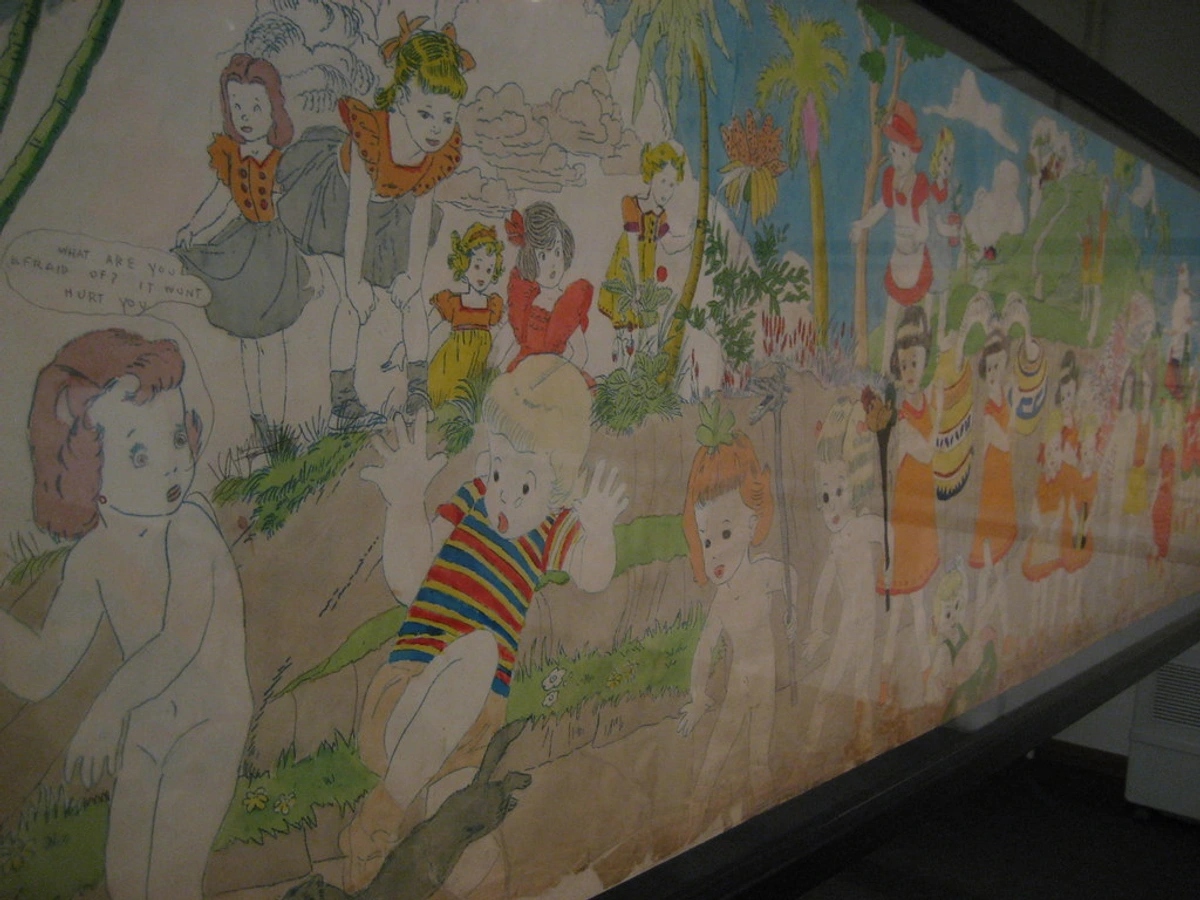
Unpacking Her Canvas: A Glimpse into Key Works
To truly grasp Carrington's genius, and trust me, there's a lot to grasp, it helps to dive into specific pieces. It's like deciphering a beautiful, complex dream, where every symbol is a key to a deeper understanding. Take, for instance, her iconic "Self-Portrait (Inn of the Dawn Horse)" (1937-38). The very title whispers of mystical journeys and hidden meanings, doesn't it? It's not a conventional self-portrait; instead, she sits in a stark room, hair wild and unkempt, her hand extended in a gesture of communion towards a white hyena – a potent symbol of freedom, wildness, and a refusal to be tamed that often appears in her work. A white rocking horse floats precariously behind her, seemingly morphing into a creature in flight, a harbinger of transformation and escape. The entire scene, with its unmade bed (symbolizing the subconscious or a liminal state) and a half-open window suggesting a world just beyond reach, is imbued with a dreamlike, almost defiantly independent energy, encapsulating her metamorphosis from a constrained socialite to a liberated Surrealist. It's her telling us, without words, "I am not who you think I am, and I'm not here to conform, not to your expectations, nor to anyone else's." The green walls of the room, often interpreted as a nod to alchemy and transformation, further emphasize this deep internal shift, making it a profound visual statement of self-actualization and a defiant declaration of her true self. For me, it's a raw, unapologetic declaration of self-possession, a moment caught between worlds where her animalistic, intuitive self is given free rein.
Another compelling work is "The Giantess (The Guardian of the Egg)" (c. 1947). Here, a colossal, ethereal woman, cloaked in white like a mystical sentinel, stands overlooking a vast, almost lunar landscape populated by tiny, almost microscopic figures and miniature sailing ships. She holds a large, luminous egg, radiating an otherworldly glow – a potent symbol of creation and the cosmos, of latent potential and the mysteries of the universe. Birds flutter around her, reinforcing her connection to nature and the mystical, acting as her messengers or perhaps extensions of her own spirit, linking the microcosmic world of humanity to her macrocosmic power. This painting speaks to themes of cosmic motherhood, protection, and the powerful, nurturing energy of the feminine in a way that feels both ancient and utterly modern. It's a reminder that there are forces at play far larger than ourselves, often guided by a quiet, yet immense, strength, a goddess figure watching over the world she both embodies and protects, a true archetypal mother of all creation. For me, it’s a profound meditation on the power of the matriarchal principle, a silent assertion of feminine divinity over a seemingly indifferent universe.
Another captivating work that often strikes me with its poignant surrealism is "Bird Bath" (1940), created during a period of immense personal turmoil after Max Ernst’s arrest. In this painting, a solitary female figure, enveloped in a white cloak, stands near a birdbath, surrounded by spectral figures and an eerie, almost apocalyptic landscape. The birds in the bath seem to be in distress, and the atmosphere is heavy with a sense of loss and unease. This piece is often interpreted as a visual diary of her psychological state during her institutionalization and the onset of World War II, a raw expression of vulnerability and the fragmentation of identity under duress. Yet, even in its bleakness, there’s a subtle glimmer of resilience, a quiet strength in the figure’s presence amidst the chaos, reflecting her eventual emergence from profound suffering. It’s a testament to her courage in transforming personal agony into a universal artistic statement.
Then there’s "Green Tea" (1942), a mesmerizing piece created during her transformative time in Mexico. This painting features a woman, possibly a self-portrait, seated at a table with a teapot and cup, a seemingly mundane domestic scene that quickly dissolves into a fantastical vision of floating figures, a horse emerging from a curtain, and a mysterious green light bathing the room. It’s a perfect example of her ability to weave the mundane with the magical, suggesting that even a simple act like drinking tea can open a portal to other realities, a key to unlock the subconscious and the spirits inhabiting our everyday spaces. The vibrant green hues, indicative of her deep immersion in the lush Mexican landscape and its spiritual traditions, add to its ethereal and transformative quality, inviting us to find the extraordinary in the everyday. It's a quiet testament to the idea that magic isn't something external to be sought, but an intrinsic part of our everyday lives, waiting to be revealed.
And then there’s "Samain" (1951), another fascinating work from her Mexican period, which often gets less attention than her more famous pieces but is equally rich in symbolism. Named after the ancient Celtic festival marking the end of summer and the harvest, and often considered the origin of Halloween, this painting depicts a spectral, almost ethereal procession of figures. It's a haunting exploration of the veil between worlds, a dance between life and death, and her enduring connection to Celtic mythology, reminding us that for Carrington, the boundaries of reality were always porous.
And then there’s "The Conjuror (The Magician)" (1950), a captivating work from her Mexican years that just sings with her unique blend of mysticism and mischievous humor. In this painting, a central figure, part-human, part-animal, is surrounded by an array of fantastical beings and symbols, seemingly performing an arcane ritual. There are swirling clouds of energy, spectral figures, and a sense of powerful, hidden forces at play. It’s a vibrant tableau of her engagement with esoteric practices, embodying the idea that magic isn’t just a trick, but a profound connection to the unseen energies that shape our world. It's a playful yet potent declaration of her own role as a visionary, a weaver of spells on canvas, and a master of the subconscious stage. For me, this piece is a joyful affirmation of the power of imagination to shape reality, a living incantation in paint.
Beyond the Canvas: A Writer of Fierce Imagination
It’s impossible to talk about Leonora Carrington without mentioning her writing. She was a prolific novelist, short story writer, and playwright, and her literary works are just as captivating and surreal, if not more so, than her paintings. Her most famous novel, "The Hearing Trumpet" (1974), is a brilliant, darkly comedic, and utterly bizarre tale of an elderly woman named Marian Leatherby who, at 92, is sent to a rather peculiar nursing home. There, armed with a hearing trumpet, she uncovers a fantastical conspiracy involving a quest for the Holy Grail, hidden societies, and ancient matriarchal mysteries. It’s a riotous, subversive masterpiece that critiques societal norms, ageism, and patriarchal structures with unparalleled wit and a deep understanding of esoteric symbolism. This cult classic, once quietly revered, has seen a resurgence in recent years, celebrated for its prescient feminist themes and its utterly unique narrative voice, proving that true wisdom often resides in the most unexpected places. If you haven't read it, you're truly missing out on a truly wild ride – it's like a feminist, surrealist Alice in Wonderland, but for the wonderfully aged, a journey into the hidden powers of the elderly and the overlooked, and a testament to the subversive power of the seemingly frail.
But "The Hearing Trumpet" is just one gem in her literary crown. Consider her evocative novella, "The Stone Door" (also known as "La Porte de Pierre"), a powerful and often unsettling exploration of the occult, identity, and the blurring lines between humanity and the animal kingdom, often drawing on the profound and disorienting personal experiences during her institutionalization. It’s a raw, almost hallucinatory journey into the fragmented self, a literary counterpart to the psychological landscapes found in her artwork, and a stark testament to the transformative power of trauma, often presented with a disarming blend of humor and horror. It’s a raw, almost hallucinatory journey into the fragmented self, a literary counterpart to the psychological landscapes found in her artwork, and a stark testament to the transformative power of trauma. And her collections of short stories, including "The House of Fear" and "The Debutante and Other Stories," are equally mesmerizing, populated by shapeshifting animals, rebellious debutantes, and characters who blur the lines between reality and dream. These shorter works often showcase her biting satire and a keen eye for the absurdities of human nature, alongside her signature fantastical elements. But beyond prose, Carrington also ventured into playwriting, crafting surrealist dramas like "Penelope" that were often staged in Mexico, further cementing her multidisciplinary approach to storytelling. These aren't just stories; they're invitations into the labyrinth of her mind, challenging conventions with every turn of phrase and revealing a deeply unconventional worldview that seamlessly transitioned from canvas to page to stage.
What truly draws me to her writing is that it’s not just an adjunct to her art; it's an organic extension, a different pathway into the same dazzling, unsettling universe. Her stories breathe the same air as her paintings, populated by similar fantastical beings and infused with the same esoteric symbolism, almost like she's speaking in different dialects of the same secret language. It’s rare to find an artist so utterly fluent in both visual and written language, creating a seamless, interconnected body of work where each medium enriches the other, giving us twice the magic – a unique blend of gothic prose, biting satire, and pure, unadulterated surrealist vision. This multidisciplinary approach wasn't a choice; it was a necessity, a holistic expression of her profoundly intricate inner world. Her literary contributions cemented her place not just as a visual artist, but as a complete storyteller and myth-maker.
A Life Lived on Her Own Terms: Trauma and Transformation
Carrington’s life was as rich and turbulent as her art, a narrative as captivating and fantastical as any she painted or wrote. After fleeing war-torn Europe during WWII – a period of immense personal struggle, loss, and trauma that would have broken a lesser spirit – she found unexpected refuge and a new spiritual home in Mexico City in 1942. This move wasn't just a change of address; it marked a pivotal and deeply transformative shift in her work and life, a blossoming into her full, uninhibited artistic power.
It was in Mexico that her fierce independence found another powerful outlet: the burgeoning Women's Liberation Movement. In 1970, she signed a manifesto demanding free abortion and contraception, openly aligning herself with feminist causes at a time when such declarations were radical. This wasn't a sudden shift; it was a natural extension of her lifelong commitment to female autonomy and her challenge to patriarchal structures, moving from the symbolic rebellion of her art to direct political action. Imagine being so utterly convinced of your principles that you'd sign your name to something so revolutionary in that era. This wasn't a sudden shift; it was a natural extension of her lifelong commitment to female autonomy and her challenge to patriarchal structures, moving from the symbolic rebellion of her art to direct political action. Her involvement was practical, too, contributing to publications like "Mujeres de México" and actively participating in feminist circles, demonstrating her unwavering commitment to social change alongside her artistic pursuits. For Carrington, the personal was always political, and her art was just one powerful expression of that profound belief. She wasn't just painting fantastical worlds; she was helping to build a better one, one brushstroke and one manifesto at a time. Her activism, like her art, was rooted in a deep belief in the inherent power and wisdom of the feminine, a call for a more equitable and spiritually aligned world.
Her earlier experiences, including a devastating mental breakdown and involuntary institutionalization in a Santander asylum in 1940, were channeled directly into her art and writing. Her memoir "Down Below" (1944) is an unflinching, chilling, yet profoundly eloquent account of this period, a literary feat of self-analysis and artistic translation of trauma that still resonates with haunting power today. It's a raw, semi-fictionalized chronicle of her descent into madness, her often brutal treatments, and her desperate search for meaning amidst profound suffering, detailing her vivid hallucinations and her struggle to maintain a grasp on reality – a journey many might break from, but she transformed. This audacious honesty, this raw translation of personal pain into something beautiful and meaningful, transformed her suffering into a crucible for creativity, allowing her to process and transcend her ordeal through the act of creation, turning the darkest corners of her mind into art. It reminds me of other formidable female artists like Frida Kahlo, who similarly used their personal suffering as a catalyst for powerful artistic expression and self-discovery, turning their pain into profound art and leaving an indelible mark on art history.
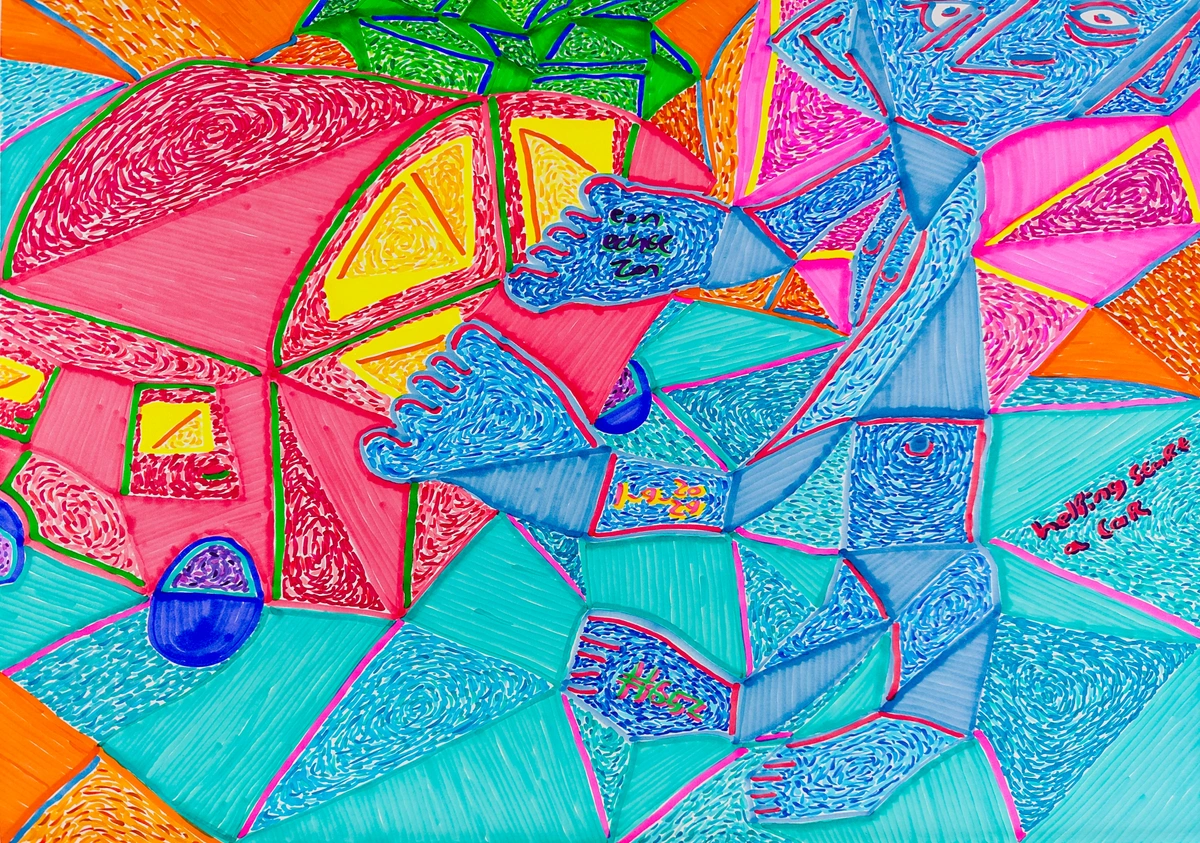
--- You know, sometimes I think the greatest art comes from the deepest wounds, transformed into something resilient and utterly beautiful. And trust me, when it comes to transforming pain into artistic gold, Frida was a true alchemist.
It's this refusal to shy away from the darker, more challenging aspects of existence that makes Carrington's legacy so compelling. She didn't just survive; she transformed, evolving her vision until her passing in 2011 at the age of 94, remaining an active, fiercely independent spirit and a prolific creator until the very end. Even in her nineties, her mind was as sharp and her wit as keen as ever, continuously engaged in art, writing, and fierce political commentary, refusing to conform to any notion of quiet retirement. She showed us that even in the deepest despair, there is material for transcendence, a path to alchemize suffering into profound insight and creativity.
A Feminist Vision: Matriarchy, Power, and the Divine Feminine
While not an overt political activist in the modern sense, Leonora Carrington's entire oeuvre is a profound statement of feminine autonomy and power. She consistently challenged patriarchal structures, both within the Surrealist movement (where she notably resisted the male gaze and the tokenistic role of 'muse' or 'femme-enfant' assigned to women) and in society at large. Her art is replete with powerful goddesses, wise women, and hybrid creatures that embody a matriarchal force, often overturning traditional power dynamics and offering visions of a more balanced, intuitive world. Works like "The Giantess" explicitly present a monumental feminine presence, while characters in "The Hearing Trumpet" embark on a quest for ancient matriarchal wisdom. She consistently depicted a world where the feminine principle was not only revered but also an active, transformative force, often in direct contrast to the more overtly masculine themes prevalent in some Surrealist art. It’s like she built a whole new mythology where women held the keys to all the ancient secrets. Her subtle yet potent political stance was woven into the very fabric of her fantastical worlds, where female figures often held the keys to ancient knowledge and transformative power, demonstrating a quiet, persistent rebellion against the status quo, even extending to her later open activism in Mexico.
She explored themes of female identity, sexuality, and spirituality from a deeply personal and unconventional perspective, offering alternative narratives to male-centric mythology and history. In her world, women are not passive muses, not objects of desire, but active agents, formidable sorceresses, profound alchemists, and sacred keepers of ancient knowledge. Her work consistently depicted a world where the feminine principle was not only revered but also an active, transformative force, often in direct contrast to the more overtly masculine themes prevalent in some Surrealist art. This subversion, delivered with a wry wit and extraordinary imagination, didn't just cement her as a quiet but potent feminist icon; it laid groundwork, inspiring generations of women artists and thinkers to reclaim their own narratives and explore the depths of the divine feminine in their own terms. Her influence can be seen in the magical realism literary movement and in the work of countless contemporary artists who champion the mystical and the feminine. She reminds us that true power often resides not in brute dominance or societal structures, but in the magic of creation, the wisdom of the wild, and the profound, often overlooked, strength that emanates from within. Her vision of a re-sacralized feminine, connected to ancient mysteries and ecological awareness, offers a potent antidote to modern alienation. It's a quiet revolution, painted and written, that continues to resonate, providing a blueprint for an alternative, more integrated way of seeing the world, a truly subversive act in a world often hostile to the feminine mystical.

Leonora Carrington's Enduring Legacy
Why does Carrington continue to captivate us, even today, decades after her most prolific periods? I think it’s because she offers an irresistible alternative to the mundane, a shimmering gateway to the extraordinary that exists just beneath the surface of everyday life, if only we dare to look. Her work is a vibrant testament to the boundless power of the imagination, a potent reminder that the world is far stranger and more wonderful than we often allow ourselves to believe – a much-needed antidote to cynicism in our often-too-logical world. It's this unique blend of the personal and the mythical, the humorous and the deeply profound, that makes her vision so utterly compelling, inviting us to rediscover the magic we might have forgotten. Her art and life are a testament to living authentically, even if it means charting a course far outside the established norms, a powerful message for anyone who feels like an outsider. In an age grappling with ecological crisis and a search for deeper meaning, her vision of interconnectedness and the sacredness of the natural world feels more urgent and relevant than ever.
She challenged patriarchal structures, embraced a radical independence, and, through her art and writing, showed us that there are endless, interconnected ways to perceive and inhabit reality. For anyone looking to buy art that sparks conversation, or simply to explore the depths of human creativity and the rich tapestry of forgotten narratives, Carrington's influence is undeniable and ever-growing, especially as contemporary artists increasingly seek to integrate mysticism, fantasy, and ecological themes into their work. If you’re curious about how her unique blend of mysticism and mythology fits into the broader history of art, you might find our Definitive Guide to the History of Abstract Art an interesting read, seeing how she pushed abstraction into mythical realms. Her art feels like a whispered secret, passed down through generations, urging us to question, to dream, and to embrace the magical chaos within our own lives, finding beauty and meaning in the unconventional. In an increasingly rationalized world, her persistent call to the irrational and intuitive feels more vital than ever.
It makes you think, doesn't it? About the stories we tell ourselves, the images we choose to surround ourselves with, and the worlds we create for ourselves. Perhaps her work, like mine, encourages a deeper dive into self-perception and the uniqueness of one's inner state. If her universe speaks to you, I encourage you to delve deeper into her books, explore her paintings, and perhaps even find a piece that resonates with your own dreamscape in the art for sale section, or see more about my journey and artistic influences on my timeline. After all, isn't that what art is truly about – making connections and discovering hidden realms, both within ourselves and in the wider world? So, go on, let Leonora Carrington be your guide to the extraordinary. You won't regret it.
A Timeless Vision: Leonora's Continued Relevance
Even as she aged, Leonora Carrington remained an active, fiercely independent spirit and a prolific creator until her passing in 2011 at the remarkable age of 94. Her later work continued to explore themes of transformation, mythology, and the subconscious, often with an even greater sense of distilled wisdom and playful irony. She designed tapestries, created sculptures, and continued to write, never settling into a predictable artistic mold.
In recent years, there has been a significant resurgence of interest in Carrington's work, with major retrospective exhibitions around the globe (like the acclaimed "Fantastical Worlds" at Tate Liverpool, "The Story of the Last Egg" at Museo de Arte Moderno in Mexico City, and the "Revelation" exhibition in Mexico), drawing unprecedented critical and popular attention to her unique contributions. It’s like the world is finally catching up to what she saw all along. Her vision, once perhaps considered niche, now resonates more powerfully than ever in a world increasingly grappling with themes of identity, ecological awareness, the climate crisis, and the profound search for spiritual meaning beyond conventional, often stifling, frameworks. It’s like the world is finally catching up to what she saw all along. It’s like the world is finally catching up to what she saw all along. Her vision, once perhaps considered niche, now resonates more powerfully than ever in a world increasingly grappling with themes of identity, ecological awareness, the climate crisis, and the profound search for spiritual meaning beyond conventional, often stifling, frameworks. Her sharp wit and profound insight make her work not just fascinating, but surprisingly relevant to our modern dilemmas, offering a path to reconnect with the wild, intuitive wisdom we've often suppressed. Her critiques of patriarchy, her celebration of the divine feminine, and her ecological consciousness resonate deeply with contemporary movements, making her a prescient voice for our times. In an age grappling with ecological crisis and a search for deeper meaning, her vision of interconnectedness and the sacredness of the natural world feels more urgent and relevant than ever. It's almost as if she saw all of this coming, painting and writing blueprints for a more balanced, intuitive world. Her ability to craft entire universes, rich with symbolism and populated by unforgettable characters, cements her not just as a historical figure but as a profoundly contemporary artist whose insights continue to illuminate our understanding of ourselves and the world around us. She truly built a legacy that transcends time, a vibrant, living testament to the enduring power of an unbridled imagination, and a quiet insistence that there's always more to see, more to understand, beyond the veil of ordinary perception. This ongoing rediscovery is a testament to the enduring power of her unique vision to speak to new generations, inspiring them to look beyond the ordinary and embrace the magic that resides within and around us. So, if you ever feel that little tug, that whisper of the fantastic just beyond your everyday, remember Leonora. She's probably just inviting you to play, to step into a world where the extraordinary isn't just possible, but the very essence of reality.
Leonora Carrington and The Occult: A Deep Dive into Gnosticism and Magick
You know, it’s one thing to dabble in the mystical, but Carrington lived it. Her engagement with the occult wasn't merely intellectual; it was a deeply personal, spiritual path that infused every aspect of her art and life. Beyond the general alchemy and Celtic myth she explored, Carrington had a particular fascination with Gnosticism, an ancient spiritual movement that emphasizes personal spiritual knowledge over orthodox teachings, often seeing the material world as flawed and seeking a direct, intuitive connection to the divine. This resonated profoundly with her own rebellious spirit and her quest for hidden truths, far beyond the confines of conventional religion or even Surrealist dogma. Her paintings often subtly, or sometimes overtly, depict Gnostic themes of spiritual awakening, the journey of the soul, and the unveiling of hidden knowledge, inviting us to look beyond the surface of reality and find the divine spark within. She was particularly interested in the Gnostic concept of Sophia, the feminine aspect of divinity, and the idea of a 'false' material reality created by a lesser god (the Demiurge), a worldview that resonated deeply with her own skepticism towards conventional, patriarchal systems. For her, Sophia represented the intuitive, creative wisdom that had been suppressed by patriarchal religions, a divine feminine force she actively sought to reclaim and re-embody in her art.
She also explored various forms of what she considered "magick" – not as parlor tricks, but as a genuine system for understanding and influencing the subtle energies of the universe. This wasn't about power in a mundane sense, but about tapping into primal forces, about using symbolic language to access deeper truths, a concept often echoed in Hermetic traditions. This commitment to an esoteric worldview made her unique even within Surrealism, setting her apart as a true initiate into the mysteries she painted and wrote about. Drawing from Hermetic principles of "as above, so below," she saw her art as a means to bridge the macrocosm and microcosm, to reveal the universal patterns reflected in the individual soul. For Carrington, art itself was a form of ritual, a way to conjure these unseen forces into being, making her work feel less like an image and more like an incantation, a window into a truly enchanted existence, a direct connection to the hidden currents that animate the cosmos.
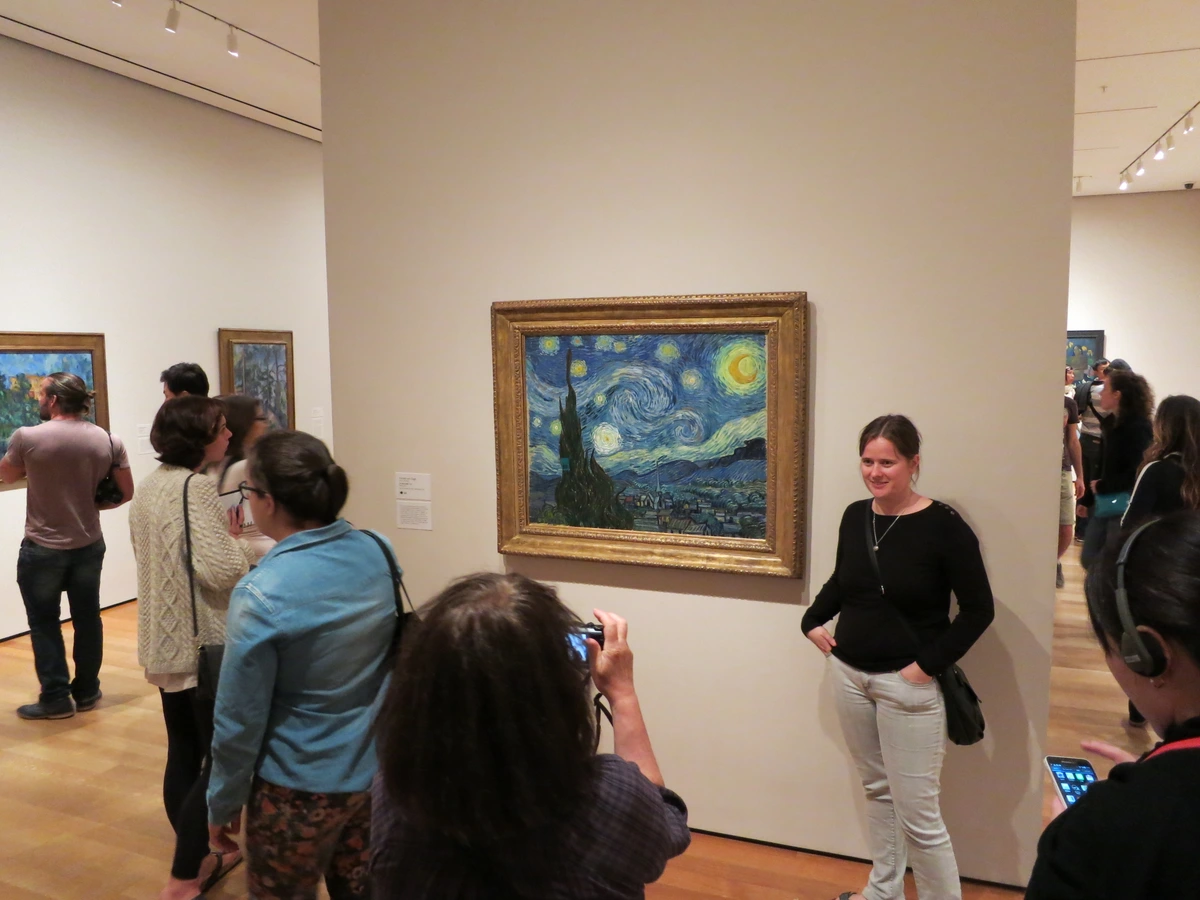
Frequently Asked Questions About Leonora Carrington
Carrington's Enduring Influence on Magic Realism
While she's squarely rooted in Surrealism, it's impossible to discuss Leonora Carrington's legacy without touching upon her profound, albeit often unacknowledged, influence on the literary and artistic movement known as Magic Realism. Long before the term became widely popularized in Latin American literature, Carrington's unique blend of the fantastical within the everyday, her seamless weaving of myth into mundane reality, embodied its very essence. Her stories and paintings didn’t just create alternate worlds; they revealed the magic within our world, suggesting that the surreal wasn't a departure from reality, but an inherent, often overlooked, aspect of it. Think of her narratives where animals speak, objects transform, and ancient rituals occur alongside ordinary life – this is the beating heart of Magic Realism. Her ability to present the impossible with such casual conviction provided a vital blueprint for future generations of artists and writers, showing how the extraordinary could be integrated so naturally that it felt entirely believable. You know, I often think she was quietly laying the foundations for a whole new way of seeing the world, long before anyone else had a name for it. Think of authors like Gabriel García Márquez or Isabel Allende, who similarly weave the miraculous into the fabric of everyday life, echoing Carrington’s fearless blurring of boundaries. She didn't just paint dreams; she showed us that dreams are a part of our waking life, if only we dared to acknowledge them. Her influence is increasingly evident in the work of contemporary artists and writers who continue to explore the boundaries between the real and the imagined, particularly those from Latin America and those focused on feminist and ecological themes. For me, her work is a foundational text of magical realism, a quiet revolution in storytelling that blurred the lines between the possible and the impossible with such elegant ease.
Q: What was Carrington’s view on organized religion?
A: Leonora Carrington had a famously contentious relationship with organized religion, particularly the strict Catholicism of her convent school upbringing, which she often depicted with satirical disdain in her writings. Her spiritual path was deeply personal, syncretic, and esoteric, drawn from Gnosticism, alchemy, Celtic myth, and indigenous Mexican beliefs, rather than dogmatic religious institutions. She sought direct, intuitive knowledge of the divine, often through the lens of ancient matriarchal wisdom, preferring the magic of personal discovery to prescribed dogma.
Q: What art movement is Leonora Carrington associated with?
A: Leonora Carrington is primarily associated with Surrealism. She was an important figure in the Surrealist movement, known for her unique and imaginative approach that incorporated mythology, alchemy, and esoteric symbolism.
Q: Where did Leonora Carrington live most of her life?
A: After living in various places during her early life and the war, Leonora Carrington spent the majority of her adult life in Mexico City, where she became a prominent figure in the local art scene and continued to develop her distinctive style.
Q: Was Leonora Carrington also a writer?
A: Yes, absolutely! Leonora Carrington was a highly accomplished writer of novels, short stories, and plays, often complementing the themes and imagery found in her visual art. Her most famous novel is "The Hearing Trumpet."
Q: What are some recurring symbols in Leonora Carrington's art?
A: Leonora Carrington's art is a rich tapestry of recurring symbols. Key among them are animals, especially hyenas (representing wildness and freedom), horses (transformation and intuition), and birds (messengers between worlds). Eggs often symbolize creation and cosmic potential, while alchemical symbols and mythological figures (goddesses, shapeshifters) abound, all contributing to her complex, otherworldly narratives. Every element feels like a key to unlocking a deeper mystery.
Q: What themes are common in Leonora Carrington's art?
A: Her art is rich with themes of transformation, metamorphosis, magic, alchemy, mythology (especially Celtic and Egyptian), female identity, animals (especially hyenas and horses), and the exploration of subconscious dreamscapes. She often created hybrid creatures and depicted mystical rituals.
Q: What was Leonora Carrington's relationship with her family like?
A: Leonora Carrington had a famously difficult relationship with her wealthy British family, who struggled to understand or accept her rebellious nature and unconventional artistic path. Her aristocratic upbringing and the strictures of convent and finishing schools were a constant source of conflict, often depicted with wry humor and sharp critique in her writing, particularly in works like "The Hearing Trumpet." She ultimately chose a life of artistic and personal freedom that diverged sharply from their expectations, forging her own destiny far from the 'polite society' she was born into. It’s a testament to her fierce independence, truly.
Q: How did Leonora Carrington contribute to Surrealism?
A: Leonora Carrington formed deep and influential friendships with other female Surrealist artists, most notably Remedios Varo and the photographer Kati Horna, especially during her time in Mexico City. This circle of women provided mutual intellectual and emotional support, fostering a unique creative environment where they explored shared themes of alchemy, mythology, and the feminine experience, often in contrast to the male-dominated narratives of the broader Surrealist movement. Their collaborations and shared perspectives significantly enriched their individual bodies of work.
Q: What was her relationship with other female Surrealists?
A: Carrington enriched Surrealism by bringing a distinctly feminine perspective, infused with esoteric knowledge and ancient mythologies, rather than focusing solely on Freudian psychoanalysis. She challenged the male-dominated aspects of the movement and introduced a vibrant, often subversive, narrative quality to her work. She expanded the scope of what Surrealism could be, moving it beyond mere dream depiction into complex, mythopoetic world-building, infusing it with a narrative depth and spiritual resonance that was distinctly her own. Her work was a testament to the idea that the subconscious could be explored through a myriad of cultural and mystical lenses, not just a singular psychological framework, and that the feminine held a unique key to these ancient mysteries.
Q: How did Leonora Carrington spend her later years?
A: Leonora Carrington remained an active and prolific artist and writer until her passing at the age of 94 in 2011. She continued to live in Mexico City, creating sculptures, tapestries, and paintings, while also engaging in political activism. Her later work showed an even greater distillation of her wisdom and playful irony, proving that her creative spirit never dimmed. It's inspiring to think of her, still conjuring worlds in her nineties.
Q: What is Leonora Carrington's influence on contemporary art?
A: Her influence on contemporary art, especially among female artists and those exploring themes of magic realism (a genre she practically embodied before it had a name), mythology, and the divine feminine, is immense and growing. Artists continue to be inspired by her fearlessness in exploring personal narratives, her unique iconography, and her commitment to an imaginative, often subversive, vision that transcends conventional boundaries. She paved the way for many who sought to blend the fantastical with the profound, demonstrating how deeply personal narratives can tap into universal archetypes and enduring mystical traditions. Her work serves as a powerful reminder that art can be a vehicle for both personal healing and broader cultural critique, pushing us to question accepted narratives and embrace a more enchanted view of existence.




